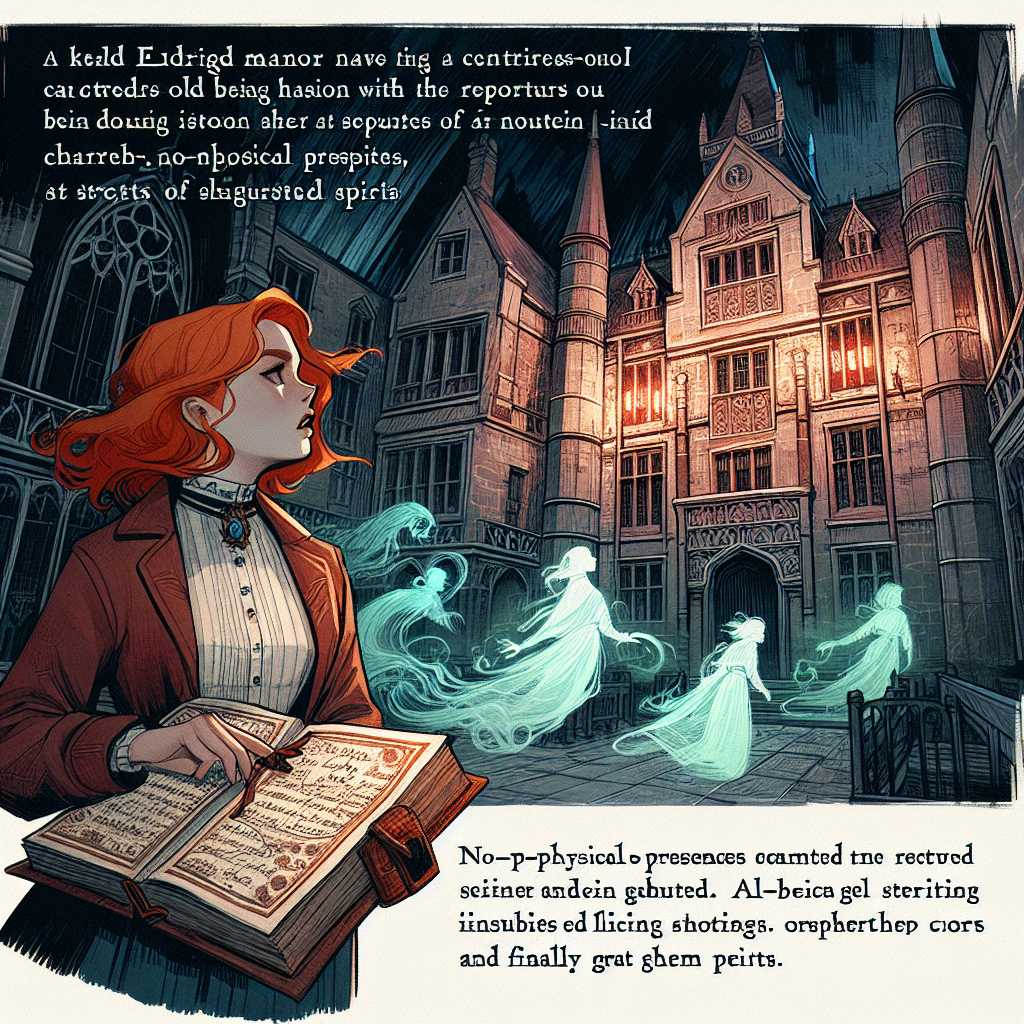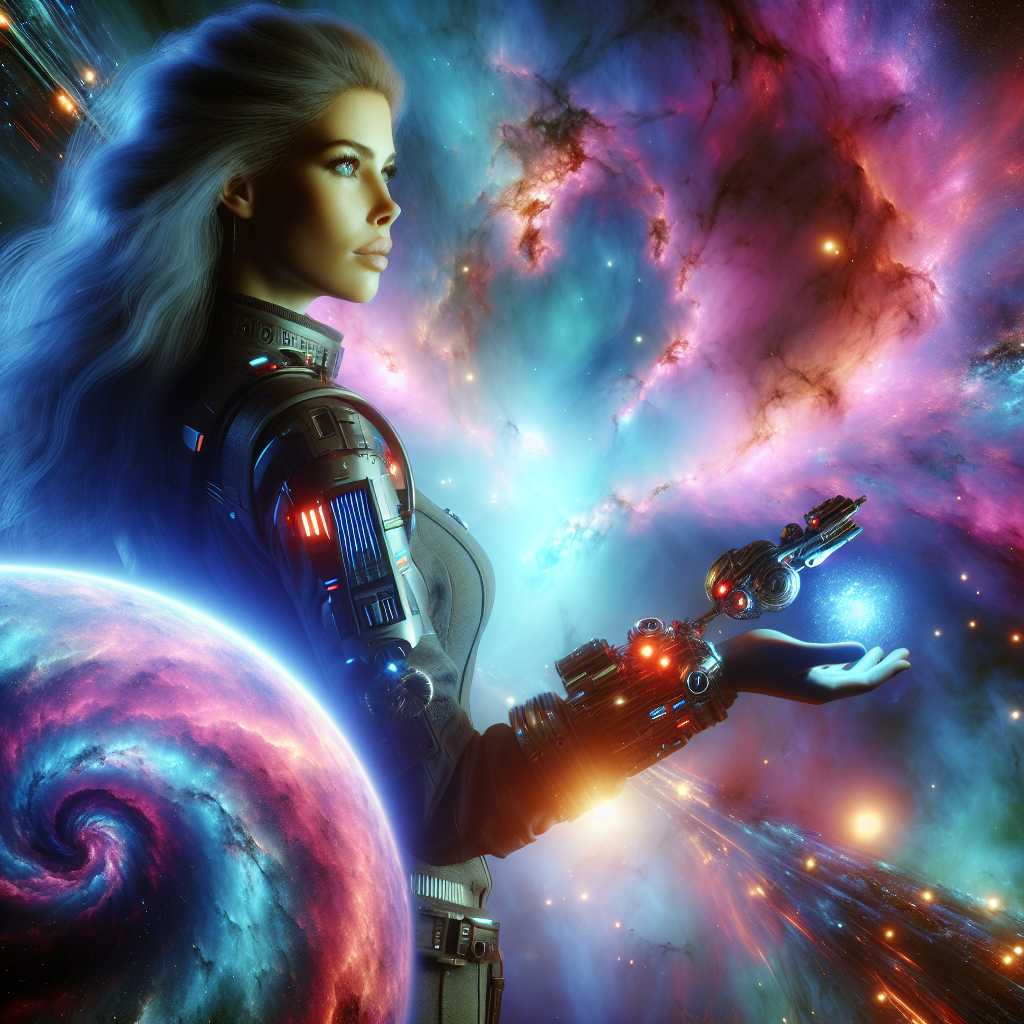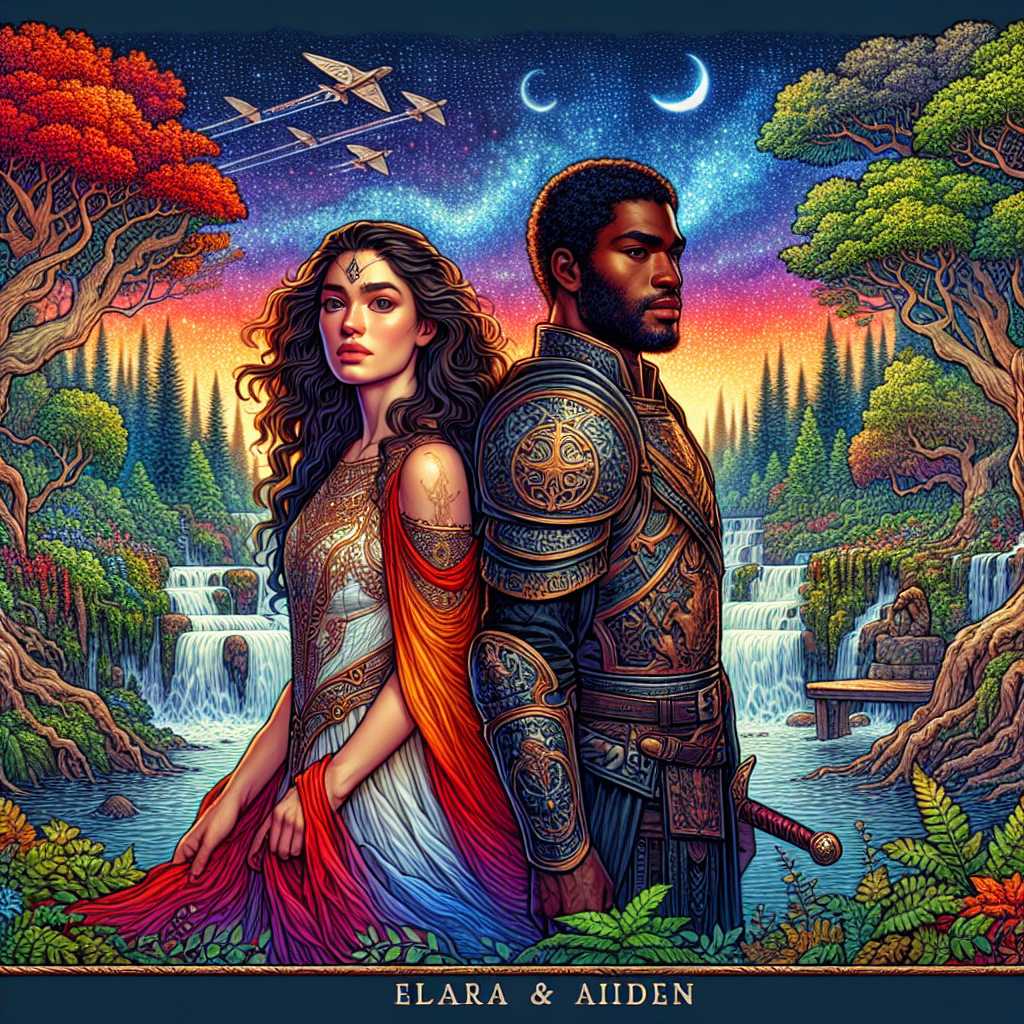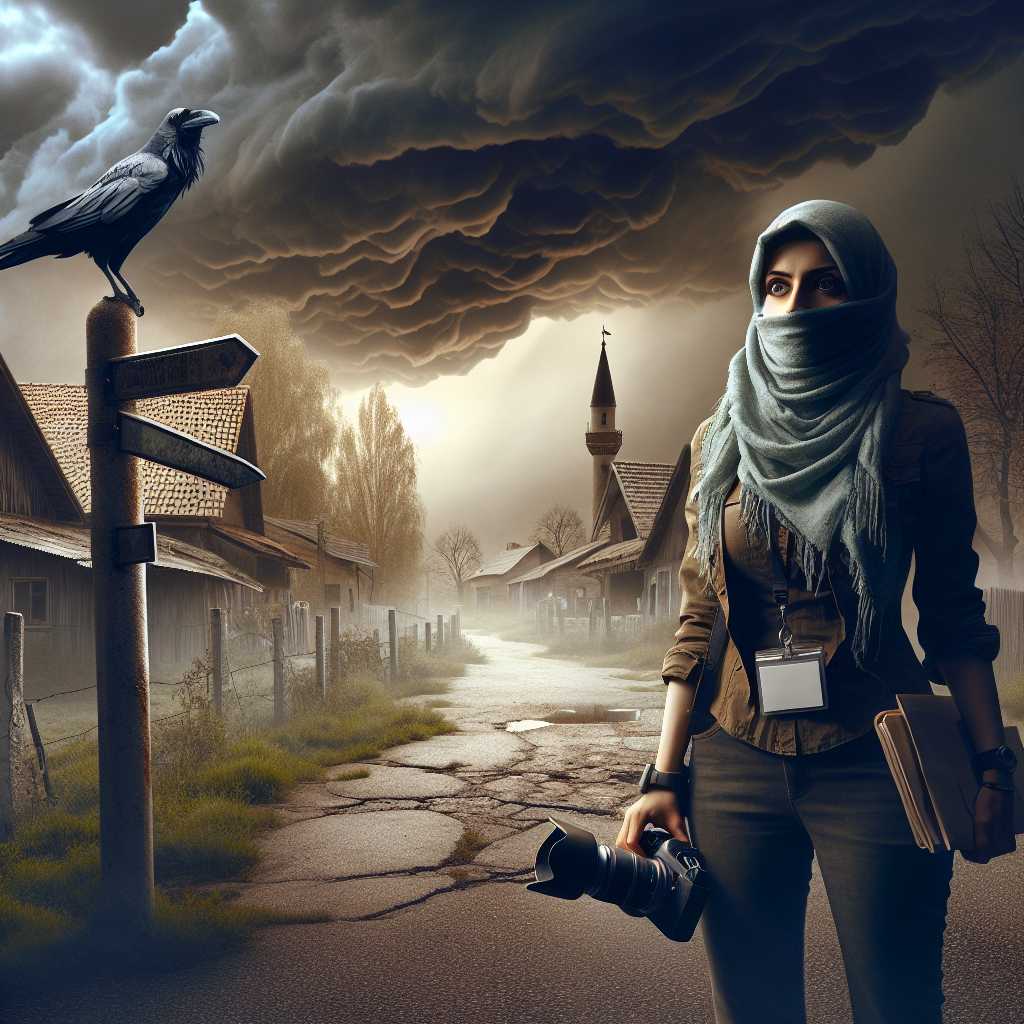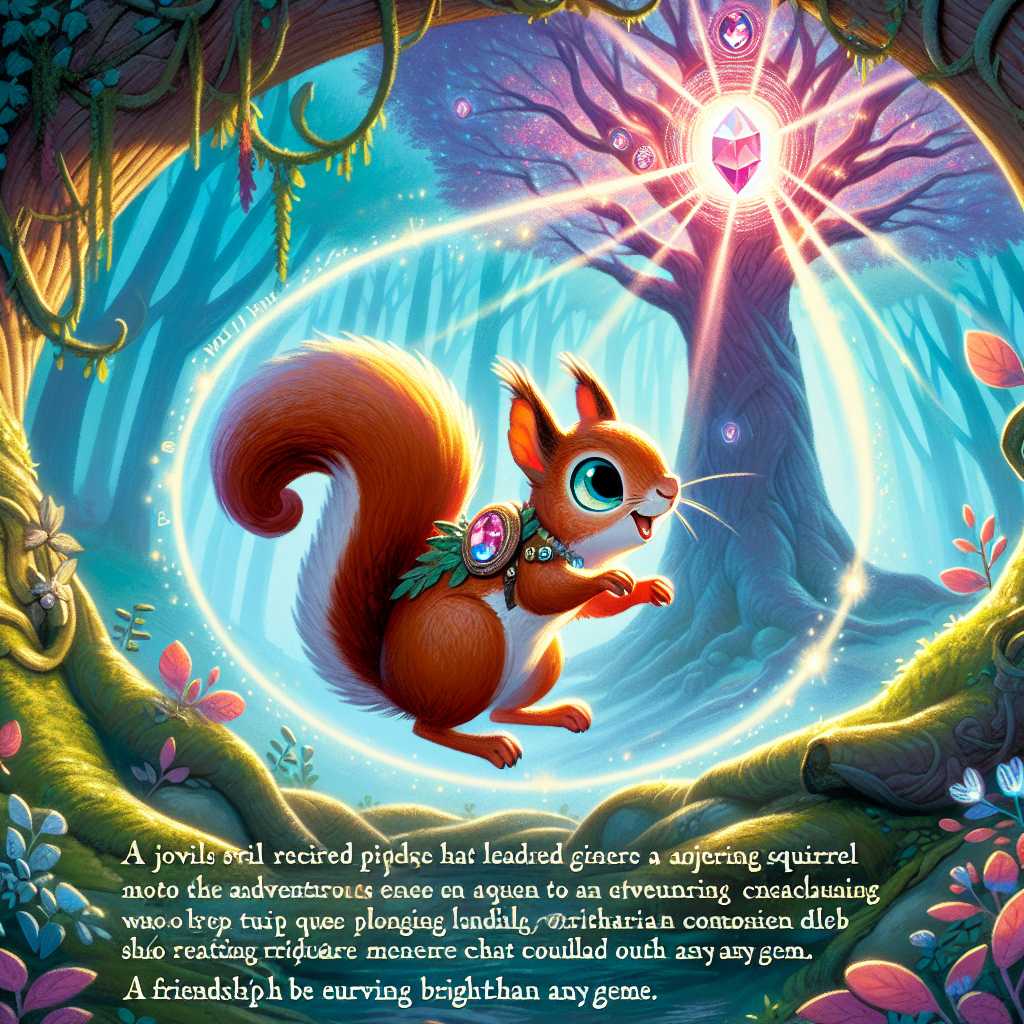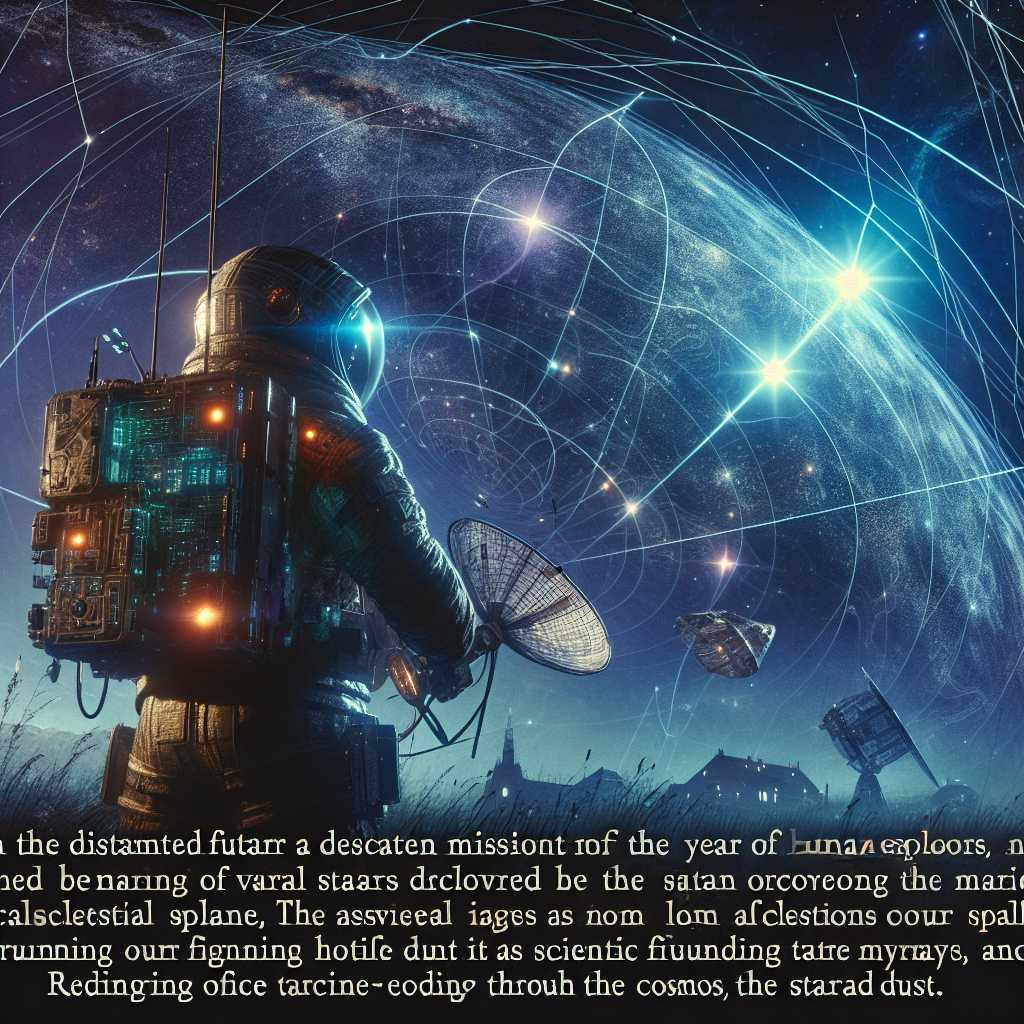
In the year 2476, humanity had long departed from its cradle, Earth, spreading its tendrils into the vast inky expanses of the universe. Not of conquest, but of curiosity. Among this diaspora was a team on the interstellar ship Nostalgia, their mission unlike any other embarked upon by humans. They were cartographers, but instead of mapping lands, they painted the intricate, ever-changing dance of celestial bodies across the velvet tapestry of space. This is the story of how they recorded the unrecordable.
Captain Elara Swift stood at the helm of the Nostalgia, her gaze settled beyond the transparent shield that separated her from the void. Unlike other ships armed and prepared for the unknown, hers was designed for observation—sensitive panels and arrays flickered with the starlight passing like specters, feeding their thirst for data.
"How far do you reckon we've come, Captain?" asked Bertrand, the ship's navigation expert, his eyes twinkling with humor and knowledge behind his wire-rimmed glasses.
"Far enough to have lost sight of where we began," she answered, her voice a blend of reverence and responsibility. "Yet still close enough to etch our maps." The crew had left Earth five years ago, when a solar storm had disrupted their departure and technology alike. They were transient visitors, carrying snippets of their terrestrial home wherever they wandered.
Elara turned to relay Bertrand's data to the ship's AI, named Sage, who seamlessly integrated human thought and synthetic precision. "Sage, compile the latest star chart," she commanded, and the interface around the helm flickered to life, displaying constellations that no human mind had ever named. They appeared on the displays like ancient myths waiting to be told.
"Data compiled, Captain. Cross-referencing with known astrological patterns," Sage's synthetic timbre echoed in the chamber, a reminder of the fragility yet resilience of human knowledge.
And there, among the revelations of starlight, arose a puzzle. An array of stars that danced in an unexpected pattern—a symmetry of cosmos that whispered secrets only held in cosmic tongues. "What say you to this formation?" Elara mused aloud, knowing that her team—assembled with brilliant minds and diverse spirits—would debate the charts' revelations until logic laid the path clear.
"It could be a gravitational anomaly," posited Ingrid, their astrophysicist, her data-laden fingers tapping the console with rhythm and reason. "Or perhaps a cloaked planetary system, hiding from view with deliberate intention."
Bertrand shook his head, dissent weaving through his tone, "A mirage, more likely—space tends to deceive with light and motion."
As their words floated through the cabin, Elara felt the ancient storyteller's pull, the gravitational center of every debate and decision. Trusting in both logic and lore, she chose to investigate further. **"Prepare the light-sail; we'll take a closer look. Engage at quarter-speed, Sage. Let us approach with caution—like poets unthreading stanzas in the dark."**
The Nostalgia unfurled its solar sails, capturing the dreams of nearby suns, harnessing their energy to glide closer to the mystery. As they neared, instruments detected not a mirage, but a faint signal—regular, almost rhythmic, as if the universe itself tapped in code.
"A message?" Gareth, the linguist, deciphered the affirmation within numbers. "Perhaps an invitation to understand the universe's symphony."
The pattern, decoded slowly, painted a vision of melodies transcribed into stellar arrangements, aware yet silent, awaiting resonance. It was a celestial cartouche, carrying thoughts that transcended human limitations, an expression of unity and isolation—aching to be 'spoken' through harmony.
Elara felt the magnitude of this discovery wash over her, a feeling shared through the unspoken bond of her crew. "Set our instruments to listen, to record," she instructed, her eyes mapping the stellar notes alongside Sage, "Let us learn from this cosmic choir." Day turned to night, forged in the steel of relentless shifts, each crew member taking turns to keep vigil with the patterns and projections.
Astronomers and poets alike would tell of how, at the very boundary of the known, Nostalgia made contact—not through words or conflict, but by listening to the quiet, persistent voice of the universe. This discovery danced through human consciousness, sparking revolutions in thought, exploration, and expression. They returned home some years later, their charts heavy with stardust stories, ready to translate back to a world ever-hungry for its place in the spaces between.
Thus, the chronicles of the Celestial Cartographers became legend, passed through generations who looked to the sky and wondered what messages awaited them there, held by silent stars, spinning tales only the bold dared to hear—stories yet to be echoed beyond our own celestial dance.



